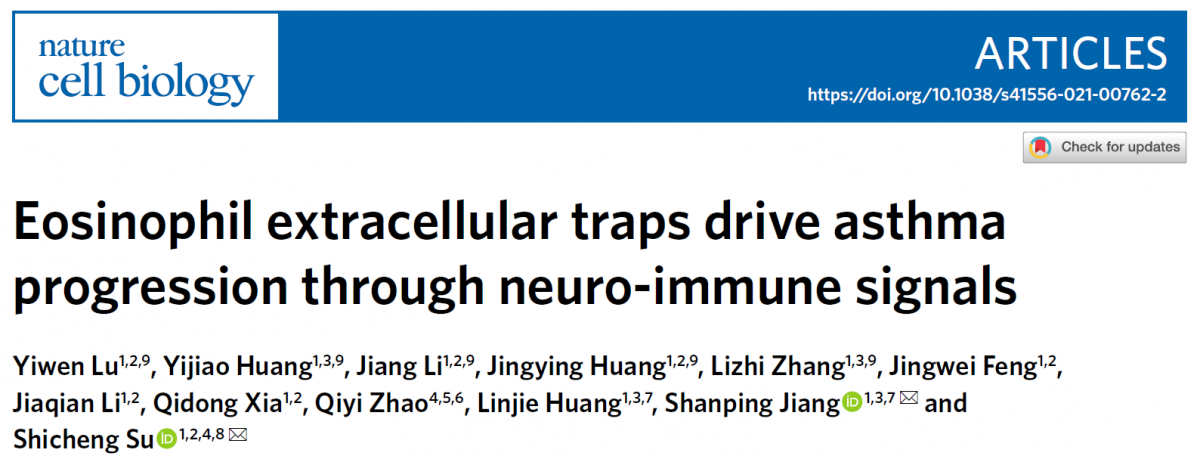Dr. Su’s group from Sun Yat-sen Memorial Hospital revealed that eosinophil extracellular traps drive asthma progression via a neuro-immune axis
Asthma is one of the most common chronic disorders which affects in approximately 300 million people worldwide, and poses a major challenge for global health and healthcare costs. It has been reported that neutrophil extracellular traps (NETs) contribute to the pathogenesis of asthma induced by lipopolysaccharides and rhinovirus, suggesting that NETs play an important role in asthma exacerbation triggered by acute bacterial or viral infection. However, it has been shown that significant dsDNA release can still be observed in uninfected HDM-exposed mice deficient in NETs, indicating that there is an alternative source of extracellular DNA in non-infectious asthma. Recently, the research team directed by Prof. Shicheng Su and Prof. Shanpin Jiang from Sun Yat-sen Memorial Hospital revealed a new mechanism of asthma progression driven by eosinophil extracellular traps through neuro-immune signals. This work entitled "Eosinophil extracellular traps drive asthma progression through neuro-immune signals" was published online in Nature Cell Biology on Oct. 6th, 2021. Prof. Shicheng Su and Prof. Shanpin Jiang from Sun Yat-sen Memorial Hospita are the corresponding authors. Yiwen Lu, an associate research fellow, Yijiao Huang, Jiang Li, Jingying Huang and Lizhi Zhang are co-first authors.
Here, by an analysis of endobronchial biopsy specimens from asthma patients, the researchers observe that NETs were only present in about 20% of the patients, whereas peribronchial eosinophil extracellular traps (EETs) could be found in all of the patients. CCDC25 was identified as a transmembrane DNA sensor that recognises NET-DNA. The researchers demonstrate that EETs enhance the endocrine function of pulmonary neuroendocrine cells (PNECs) by binding to CCDC25, which amplify allergic inflammation. It has been well documented that NET-binding proteins play an important role in various diseases. However, much less is known about the functions or even components of EET proteins. Here the researchers provide comprehensive EET-associated proteomics by LC–MS/MS and reveal that EETs are decorated with a number of granule proteins unique to eosinophils. Among them, EPX potentiates the interaction between EETs and PNECs.
In summary, the researchers uncover a crucial role of EETs in neuro-immune crosstalk and provide a feasible target to ameliorate asthma.

Link to the article:https://www.nature.com/articles/s41556-021-00762-2


